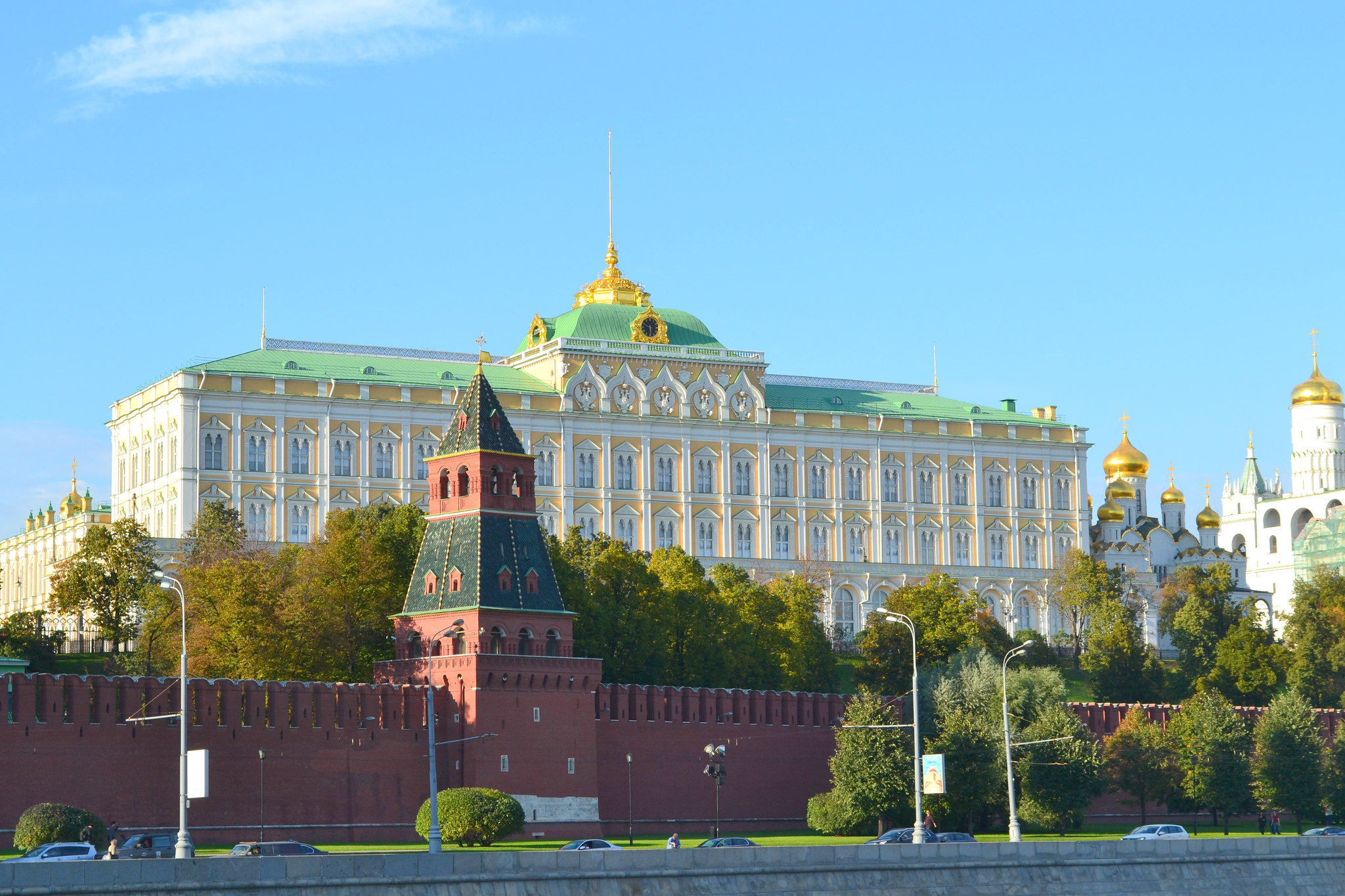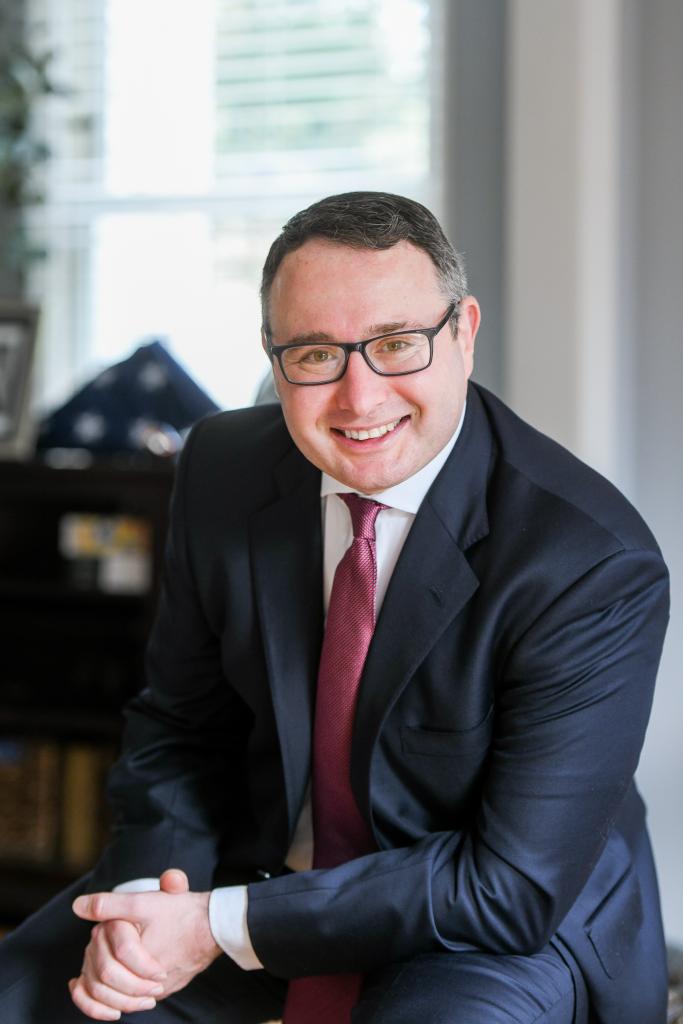Assessing the Threat of Weaponized Corruption
President Biden has established fighting corruption as a "core national security interest" and instructed his Cabinet to recommend a new whole-of-government strategy to do so. To form such a strategy, the Biden administration will be required to assess the nature and size of the threat of weaponized corruption.

Published by The Lawfare Institute
in Cooperation With

On June 3, President Biden issued a National Security Study Memorandum (NSSM) establishing the U.S. fight against corruption as a “core national security interest.” The NSSM follows the Biden administration’s March Interim National Security Strategic Guidance, which warns that China, Russia and other authoritarian states “weaponize corruption” to weaken democracy and the rule of law. With the NSSM, the president has instructed his Cabinet to recommend a new whole-of-government strategy for countering this nontraditional threat to U.S. national security.
To form such a strategy, the Biden administration will be required to assess the nature and size of the threat of weaponized corruption. This exercise will require new definitions, diagnostics and data: What precisely is weaponized corruption, as distinct from other forms of corruption? What are the strategic purposes and sources of the threat? How does weaponization work tactically? How much and what type of damage is being caused to U.S. security interests?
The threat is new to national experts trained to analyze more traditional challenges, such as China’s military posture in the South China Sea or Russia’s violations of nuclear arms control treaties. Moreover, many observers are skeptical of whether corruption represents a new authoritarian expansionist ideology that rises to the level of the threat once posed by communism or if it is just another tactic used by authoritarians. The debate is further clouded by U.S. domestic laws, regulations and practices that enable foreign weaponized corruption.
As the Biden administration seeks to strengthen democracy at home and abroad, it will require consensus on the precise nature and scope of the security threat posed by corruption. The president’s ambition requires a strategy that includes both defensive measures to prevent the enabling of foreign corruption in the U.S. and offensive actions to take the fight to the authoritarians in order to disable and defeat their transnational crony networks.
The most challenging dimension of this threat assessment is to discern and establish intentionality in the use of corruption. The term “weaponization” implies that corruption is being used purposefully as a tool of statecraft to interfere with, co-opt, weaken, and destabilize democratic institutions and processes. The assessment should aim to demonstrate intentionality based on data, systems analysis, network analysis and patterns of conduct rather than assuming intentionality on the basis of anecdotal evidence. This will help the administration develop and execute a strategy that is targeted, calibrated, sequenced and sustainable.
Treating Russia as an effective use case, this post is intended to help further the Biden administration’s assessment by summarizing the state of diagnostics and identifying both known and unknown root causes, characteristics and consequences of weaponized corruption.
The Legacy and Structure of Systemic Corruption in Russia
Under President Vladimir Putin, Russia has expanded the application of military power and covert action to prevent neighboring countries such as Georgia and Ukraine from exercising their independence and joining NATO. Yet Moscow is conducting a new and more insidious type of anti-democratic aggression, not only toward countries in its “near abroad” but also toward mature democracies in Western Europe and the United States.
Such aggression stems, in part, from a systemic level of corruption, which places Putin’s Russia in an increasing state of tension with the Western neo-liberal order. In Russia, as shown in a Senate Foreign Relations Committee minority staff report in 2018 (SFRC Minority Report), corruption is not simply a matter of individual officials abusing public power for private gain but, rather, an organizing principle of governance. Formal government decision-making is captured by informal networks of political and business patrons who control the allocation of public resources.
This system is a hierarchy, the “vertical of power,” wherein Putin manages patronage networks in government agencies, state-owned enterprises and private businesses. These elements govern together as an oligarchy with the authority and protection of law. As the networks secure patronage in the form of opaque transfers of public resources, they reciprocate by demonstrating absolute fealty to Putin and the Kremlin and do not engage in opposition politics or challenge the regime.
Politically, the Kremlin is driven to legitimize this kind of state-sponsored oligarchy at home by exporting and embedding it abroad as an alternative to democracy. Putin’s vertical of power is not invincible, and continued public support depends, in part, on the perception that he is a “good tsar.” Russian opposition leader Alexei Navalny’s January publication on YouTube of “Putin’s Palace,” an investigation alleging that Putin has arranged to finance the construction of a palatial retreat on the Black Sea for personal use at a cost of $1.4 billion, hacks this myth. It spurred tens of thousands of Russians to take to the streets and demand an end to the systemic corruption that plagues the Putinist regime.
Today’s threat of Russian corruption is rooted in the dissolution of the Soviet Union in 1991 and the end of the Cold War. “Good Capitalism, Bad Capitalism, and the Growth of Economic Prosperity” is a 2007 study by leading American economists that argues that while capitalism prevailed over communism as the optimal way to organize and grow economies, it is not monolithic. There are four different types of capitalism—big corporate, entrepreneurial, state-guided and oligarchic—and the role of government differs profoundly in each.
Russia has moved steadily toward oligarchic capitalism. The Soviet legacy of central planning could have led to a state-guided model geared to maximize societal growth by investing in specific sectors, goods and services. But Russia is also shaped by strong feudal traditions from pre-Soviet times, when tsars and their boyars controlled the national wealth by extracting rents from peasants, prohibiting ownership of private property and stifling growth of modern industry. Moreover, during Soviet communist times, citizens often utilized relationships and social ties to obtain scarce consumer goods and services through informal exchanges, known as blat (блат). These informal networks were often necessary for achieving results in Soviet citizens’ careers and private lives. They circumvented the inefficient formal procedures established by the Soviet bureaucracy as part of a larger system based on favors and connections. During Russia’s transition to capitalism, this widely accepted practice drove economic activity toward informality and nontransparency.
Drawing on imperial and Soviet traditions, KGB and Communist Party leaders displayed oligarchic tendencies to survive the transition to capitalism by creating new networks of loyal patrons based on shared interests. In the early 1990s, they moved billions in state resources and financial assets abroad, privatized the most profitable enterprises for themselves and their close associates, and began engaging in criminal activity.
As former KGB agent Putin took control of the national government in 2000, he leveraged his power to form interlocking networks with current and former members of the security services (siloviki) and private-sector surrogates. They manipulated law and institutions to privatize the cash flow from public assets for their personal benefit and erected high barriers to market-based competition. By the end of Putin’s second presidential term in 2009, alarmed leaders from Eastern and Central Europe wrote an open letter warning the United States that Russia was engaged in activities targeted to capture energy and other key industry sectors, acquire control of media, and bribe national officials in their countries.
At the time, America’s leaders had been working on a bipartisan basis with Russia for years to help the nation enter the World Trade Organization. When Russia finally acceded in 2012, they hoped that the Kremlin would be incentivized to undertake the reforms required to become integrated into the rules-based trading system.
Instead, Russia has become a modern-day mercantilist power led by an oligarchy that utilizes the state to expand into and wrest greater control of foreign markets. Corruption provides both the means and ends of the expansion of the state’s power. As reported by the nongovernmental organization Global Financial Integrity, in order to launder and secure illicit gains in western financial institutions, Russians move tens of billions offshore each year. At the same time, the Kremlin builds patronage networks in other nations that can help Russia’s leadership both legitimize and expand its power.
For Russia, then, the rule of law poses a strategic threat. Russia seeks to combat the U.S.-led post-Cold War liberalization of global trade, finance and markets. It is pushing oligarchic control as an alternative to the Western model of a free market driven by private-sector competition based on the protection of private property. To consolidate this oligarchic control beyond its borders, the Kremlin exploits the relative openness of Western legal systems.
As Russia’s state-sponsored oligarchy seeks to compete economically and politically with the West, however, it will be important for the Biden administration to establish whether the Kremlin has a strategy to apply corruption as a tool of statecraft. Stated differently, is corruption a default position for a country unable to compete economically in rules-based global markets or win hearts or minds through traditional forms of soft power? Or is corruption a strategically driven foreign policy objective with well-defined metrics for determining benefits and costs and a clear end-state?
Russian Tactics for the Use of Weaponized Corruption
As the Biden administration seeks effective ways to counter the weaponization of corruption as a security threat, it will be essential to link Russia’s strategic concerns to its tactical conduct. The Kremlin has a range of corruption techniques perfected at home that it can use to seek specific policy outcomes and the destabilization of democracies in other nations.
For purposes of identifying Russian tactics, it is important to consider Russia’s 2013 “new generation warfare” doctrine, in which Russian Gen. Valery Gerasimov articulates the view that a modern military power has become increasingly integrated with nonmilitary measures, including cyber warfare, disinformation and covert action. The doctrine is based, in part, on a Russian perspective that Western powers have used similar new generation warfare to support color revolutions during events like the Arab Spring. Importantly, the doctrine does not name corruption as a tool. Nor is it clear that it has been uniformly adopted by the Russian military. Nevertheless, it fits well with Russia’s gray zone operations and objective to use lower-cost techniques to exploit asymmetries between Russia and the West, such as the relative openness of democracies, financial systems and independent media.
In practice, as the SFRC’s minority staff report finds, Russia seeks to capture foreign elites through offers of partnership, cash payments and other financial inducements. For these purposes, it uses state-owned enterprises in the energy and defense sector, private business surrogates, money laundering, and financing of political campaigns. Yet the hidden nature of such financial transactions and the blurring of lines between the state and the private sector, and between business and criminal activities, makes it difficult to discern intentionality. The Kremlin does not direct the laundering and investing of all illicit gains in offshore zones, nor is every Russian business that operates in global markets an extension of Moscow’s foreign policy.
Russia’s pattern of aggression toward Ukraine helps illustrate both the means and ends of state-sponsored oligarchy. Ukraine’s 2013 Revolution of Dignity was a response to President Viktor Yanukovych’s decision, under considerable pressure from Moscow, to reverse the nation’s commitment to sign an association agreement with the European Union. Russia’s leaders saw Ukraine becoming a member of the EU rules-based trading system as the economic version of joining NATO. After weeks of violence and an aborted effort to suppress peaceful protests with violence, Ukrainians overthrew the government of Yanukovych, who had amassed a billion-dollar fortune, including as an alleged beneficiary of the Russian-Ukrainian network that profited illegally from Russian state-owned Gazprom’s sale of gas into and through Ukraine to European markets.
Russia reacted militarily by annexing Crimea and occupying the Donbas region in eastern Ukraine. Prior to the onset of military conflict, Crimea and the Donbas had been softened up to Russian influence, military intervention and occupation. Arguably, this resulted from a type of corrupt co-optation. Ukraine’s security services were inundated with Russian agents and corrupt officials in a bloated bureaucratic apparatus—Ukraine’s inheritance from the Soviet period. As a result, when Russia’s “little green men” appeared in Crimea, many members of the long-compromised Ukrainian security services simply defected. Others, such as former Berkut officers and members of the Ukrainian Alpha Group special forces, helped organize separatist militias and Russian proxy forces in the east. Russia has continued to exploit latent corruption in Ukraine’s security services among both current and former members.
Russia has also exploited other nontraditional networks to achieve similar goals in countries such as Ukraine and Serbia. In both nations, the Russian Orthodox Church (ROC) has acted as a herald of Russia’s soft power. In Ukraine especially, the ROC reportedly aided pro-Russian separatists. Other nominally nongovernmental organizations (though this term is applied here only loosely) such as the Night Wolves biker gang, Cossack groups and militant youth camps have been used to organize and train pro-Russian paramilitary elements in Ukraine and the Balkans. The actions of these groups often intersect with one another, making it difficult to identify the root drivers of their mobilization and the involvement of the Russian government.
In response to the Revolution of Dignity, Russia has also sought to discredit the legitimacy of Ukraine’s new governments and subvert democratic institutions and processes. As described in U.S. Treasury Department reports, Moscow exerts a malign influence through local oligarchs who use control of the energy, banking and media industries to interfere with elections and institutions such as courts, prosecutors and the central bank. Yet more analysis is required to establish precisely when oligarchs—such as Dmytro Firtash and Viktor Medvedchuk—act in their own or Russia’s interests.
Russia’s conduct as an energy superpower in Europe also requires further diagnosis to establish when corruption techniques are being used. As the leading supplier of oil and gas to Europe, Russia leverages the dependency of individual countries both to secure favorable pricing and to disrupt the further growth and integration of the EU. The Kremlin’s control of the management of state-owned enterprises Gazprom, Rosneft and Rosatom provides financial incentives to create networks of shared interests with European political and business leaders. As the SFRC minority staff report shows, these enterprises have acquired majority shareholdings in power generation, distribution, storage and other energy infrastructure in Ukraine, Moldova, Bulgaria, the Czech Republic and Serbia.
Russian energy diplomacy further demonstrates the reach of the Kremlin’s tactics. Russia’s financing of pipelines such as Nord Stream II includes efforts to divide and capture European leaders. In the Nord Stream case, former German Chancellor Gerhard Schroder was given a highly paid board position to help build Gazprom’s Nord Stream pipelines. More recently, former Austrian Foreign Minister Karin Kneissl and former French Prime Minister Francois Fillon joined the boards of the state-owned Russian oil companies Rosneft and Zarubezhneft, respectively. Russia’s use of state-owned energy enterprises as a means of elite capture generates widespread concern about the potential impacts on Europe’s energy security, Ukraine’s lost revenue and increased Kremlin influence in European business circles.
Russia also operationalizes corruption to fund separatist statelets like the self-proclaimed Donetsk People’s Republic and Luhansk People’s Republic. Coal from Donbas mines—a longtime breeding ground for corrupt business practices in Ukraine—is transported to Russia, Belarus or other separatists statelets like Abkhazia, at which point it is exported to countries like Turkey, Romania, Belgium and Poland, among others. The profits from these illegal coal shipments have been used to offset some of the exorbitant costs associated with maintaining the rudderless economy in the separatist-controlled Donbas. The recent Ukrainian sanctions placed on Ukrainian oligarch Medvedchuk and his arrest, were based, in part, on evidence that he took part in the illegal coal trade.
Another subject that requires deeper assessment is how the Kremlin takes advantage of other countries’ adherence to the rule of law to further its agenda. While the Russian state seeks to weaken the rule of law, Russian oligarchs require it to function effectively. They increasingly use foreign courts to secure and legitimize their control of key domestic business assets while also damaging their adversaries. In the United Kingdom, there is an entire industry of enablers, including private intelligence firms and lawyers, that help Russian elites exploit the openness of the British legal system to facilitate more favorable legal outcomes, freeze a defendant’s assets, introduce questionable evidence and place increased pressure on opponents.
Such abuse of the Western rule of law-based system also extends to the United States. In but one example, as part of the inglorious Rudy Giuliani saga in Ukraine, former President Trump’s personal attorney, is alleged to have met with Dmytro Firtash and offered legal aid to help prevent Firtash’s extradition to the U.S. from Vienna on corruption charges in exchange for compromising materials on the Biden family. (Firtash has denied any involvement with such efforts.) At the time, Firtash changed his legal representation to the husband-and-wife team of Joseph diGenova and Victoria Toensing, both well-known lawyers in conservative circles and associates of Giuliani. Firtash has long been accused of acting as a “gray cardinal” for Russia in Ukraine while maintaining close ties with organized crime groups and the Kremlin.
As oligarchs from Russia (as well as Central Asia, China and other nations) increasingly depend on foreign courts, it will be important to assess when such conduct constitutes state-sponsored use of corruption to undermine the rule of law or a defensive maneuver to secure power and position at home while laundering assets and reputation abroad.
The deployment of corrupt mechanisms to gain political influence in foreign countries is another Kremlin tactic that requires careful diagnosis. The use of dark money, donations and political contributions in countries such as France, Germany and the United Kingdom has facilitated the rise of pro-Russian politicians and political groups who foment polarization (often far-right parties).
Russia’s interference in the 2016 U.S. presidential elections raised the specter of corruption being used tactically to capture American leaders. While Special Prosecutor Robert Muller and the Senate Select Committee on Intelligence thoroughly investigated Moscow’s cyberattacks and disinformation, intentional corrupt acts involving finance have been harder to prove.
One possibility centers on the role of a Russian intelligence agent, Konstantin Kilimnik, who was Paul Manafort’s partner in a Kyiv-based political consulting business before Manafort became chairman of the Trump campaign. Manafort shared confidential campaign polling data with Kilimnik who, according to an April 15 U.S. Treasury report, provided the data to Russian intelligence services. Russia could very well have used this data as part of its intricate plan to disinform and divide the American electorate. A question that has not been fully addressed is whether Kilimnik was extorting Manafort, who was $19 million in debt to Kremlin-aligned Russian oligarch Oleg Deripaska, to share such sensitive campaign information as a form of payment. Still another possibility stems from the influence of Andriy Derkach and his interactions with Giuliani and others linked to the Trump administration. Derkach, who has been labeled an active Russian operative, helped spread baseless claims that Ukraine interfered in the 2016 U.S. presidential elections while also acting as a crusader in the anti-Biden campaign. The intelligence community has assessed that “Putin had purview over the actions of Andriy Derkach.”
Putin’s Role in Weaponized Corruption
As the Biden administration further hones diagnostics and intelligence on weaponized corruption, it will become particularly important to assess how Putin’s alleged personal corruption may factor into the threat environment. The CIA reportedly produced a secret analysis in 2007 showing that Putin has amassed $40 billion through shareholdings in Russian energy companies.
How do Putin’s personal interests affect his cost-benefit as the key decision-maker in Russia’s foreign policy? On the one hand, Putin may calculate that the more wealth that he and his transnational oligarchic networks can extract, the longer he can stay in power. Currently, he pays no price for illegality at home and incurs few risks for facilitating corruption abroad. On the other hand, if Putin has accrued as much wealth as is claimed, then a change in government could result in criminal prosecution and confiscation of his assets. Revelations such as Navalny’s documentary “Putin’s Palace” foster more domestic opposition and pose a growing threat to Putin and his circle.
One ominous possibility is that Putin’s potential criminal liability may make him more prone to foreign policy gambles and military adventurism. Weighing the possibility that a change in government in Russia might lead him to prison, Putin may calculate that increasing attacks on democracies is worth the risk. In doing so, he further isolates Russian citizens from the outside world and diverts domestic attention from the failings of his regime. Moreover, despite being subject to increasing sanctions by the U.S. and the EU, Russian oligarchs close to Putin, who are presented with a similar threat of retaliation, have not changed their leader’s cost-benefit analysis and appear to have accepted that they will lose access to global markets as the price of staying in power. As a result, Putin’s future actions at home and abroad may become more reckless and less calculated.
Developing Strategic and Targeted Solutions
This post is not intended to suggest or shape conclusions regarding the nature and size of the threat of Russia’s weaponized corruption. Nor is it meant to recommend a U.S. whole-of-government strategy to counter Russia. Following President Biden’s NSSM, the administration will conduct a detailed assessment as part of a robust and discreet interagency process. The purpose of this post, rather, has been to distill analysis and information that is available in the public domain and raise certain questions that will need to be addressed to generate new diagnostics and targeted solutions. Accordingly, the table below summarizes the discussion and can serve as a tool for further analysis.
|
|
|
|
|
|
|
|
|
|
|
|
President Biden’s June 3 NSSM requires the U.S. national security community to determine how to assess the nontraditional threat of the use of corruption by Russia, China and other authoritarian nations to weaken democracy and the rule of law. This objective requires new diagnostics for establishing the intentionality of authoritarian strategies and tactical instances of weaponized corruption with accuracy and precision. As discussed, this methodological goal can be elusive for several reasons. In the case of Russia, foreign policy is driven by a state-sponsored oligarchy shaped by historical, economic, normative and geopolitical factors. These systemic considerations can make it difficult to differentiate when Russian state and non-state actors are colluding in foreign countries.
To execute the goal of the president’s NSSM and innovate new solutions to counter the weaponization of corruption, it will be essential to form a whole-of-government consensus on the nature and scope of the threat. In particular, the administration will need to differentiate between coincidence and intentional collusion. Such analysis will help the Biden administration to establish a high bar for taking concerted and targeted measures to disable and disrupt corrupt networks.







